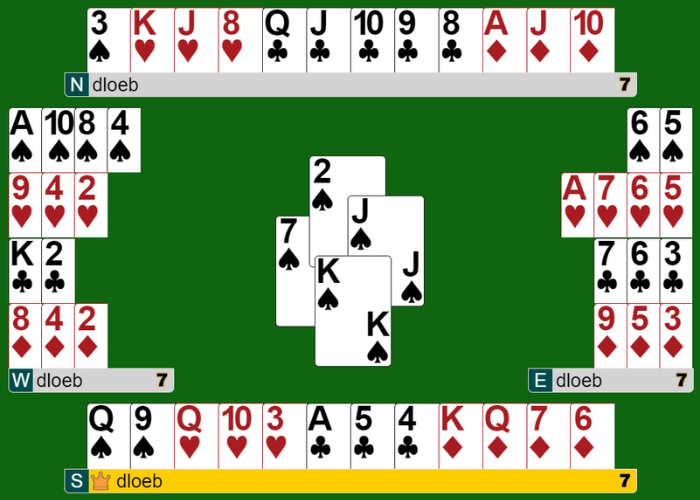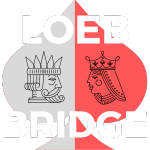A trick 2 signal defending notrump contracts communicating attitude about the opening lead.
|
Agreement |
Context |
Problem Solved |
Description |
|
Smith Echo Signal |
Used by defenders at trick 2 when defending a notrump contract and the opening lead was won by declarer |
Because a defender's play to the first trick in a notrump contract is often forced, you don't know your partner's attitude about the opening lead. So it can be difficut to determine whether to continue the suit or to switch. |
When defending against a notrump contract where declarer wins the opening lead, both defenders use the Smith Echo at trick 2 (if their play isn't forced) to communicate their attitude about the opening lead. |
Not a subscriber, no problem. Click here for your first month free.
The board below illustrate why the Smith Echo is needed and how to use the Smith Echo.
West leads the ♠7 (4th best) against South's 3NT contract. West plays the Jack (3rd hand high) which loses to declarer’s King. Declarer crosses to North's hand in diamonds and then takes a losing finesse against the ♣King. Should West continue spades or switch?

The answer depends on who has the ♠Queen.
Note that the ♠Jack is the standard play for East at trick 1 from:
- J, Jx, Jxx, Jxxx, etc.
- QJ, QJx, QJxx, etc.
On the layout #1 below, continuing spades allows declarer’s ♠Queen to win a trick. To win 4 spade tricks and beat 3NT, West must try to put East on lead so they can lead a spade to finesse declarer’s ♠Queen.

Contrast that with the layout #2 below. The spades are ready to run. When West regains the lead, West must lead a low spade to their partner’s ♠Queen to beat 3NT.

How can West know whether to continue spades?
West doesn’t know whether East wishes to encourage spades. This forces West to guess when next on lead.
A way to signal East’s attitude about the opening lead is needed.
Introducing the Smith Echo Signal
The Smith Echo is a defensive signal used at trick 2 against a notrump contract when declarer wins the first trick.
Both defenders signal their attitude about the opening lead when declarer leads to the 2nd trick (if their play to 2nd trick isn't forced).
- The partner playing 3rd to the 1st trick generally encourages with a fitting honor.
- The opening leader encourages if they believe a continuation is best for the defense.
Standard Smith Echo
- High encourages continuing the suit led at trick one
- Low discourages continuing the suit led at trick one
Reverse Smith Echo
- Low encourages continuing the suit led at trick one
- High discourages continuing the suit led at trick one
Revisiting Layout #1
On the 2nd trick, East uses the Smith Echo to discourage a spade continuation. This helps West realize they need to try to put East on lead to finesse declarer's ♠Queen.

Revisiting Layout #2
On the 2nd trick, East uses the Smith Echo to encourage a spade continuation. This helps West realize the spades are ready to run.

When 3rd hand's play isn't forced at trick 1
If dummy plays a card higher than the opening lead and you cannot beat dummy's card, signal your Count in the suit. You will then use the Smith Echo on trick 2 to signal your attitude about the opening lead.
When is the Smith Echo Off:
- If the opening lead is an honor which may hold the trck, use an Attitude signal at trick one. Now you will not need to use the Smith Echo at trick 2.
- If a Count singal is clearly needed at trick 2 for a hold-up play, the Count signal takes precedence over the Smith Echo signal.




